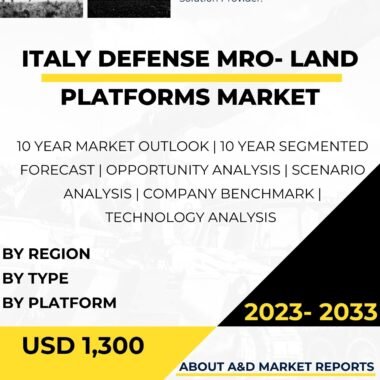Description
Saudi Arabia Armored Vehicle Market
The Saudi Arabia armored vehicle market has experienced substantial growth in recent years, primarily fueled by the country’s strategic location, regional security challenges, and defense modernization efforts. As one of the leading military powers in the Middle East, Saudi Arabia has invested significantly in upgrading its defense capabilities, resulting in a burgeoning demand for advanced armored vehicles. This article offers a comprehensive analysis of the Saudi Arabian armored vehicle market, its key players, major trends, and future prospects.
Saudi Arabia has a long history of military investment, starting from the establishment of the modern Kingdom in 1932. Initially, the military was relatively modest, but with the discovery of vast oil reserves in the 1930s, the country experienced rapid economic growth. Subsequently, the Saudi government began allocating substantial resources to strengthen its defense capabilities, including armored vehicles. Over the years, the Kingdom has maintained a policy of strategic alliances with key global powers, which has played a crucial role in acquiring advanced military equipment, including armored vehicles.
The armored vehicle market in Saudi Arabia has been witnessing steady growth due to a combination of factors. The country’s growing regional influence and security concerns have been pivotal drivers of market demand. Additionally, Saudi Arabia’s ambition to enhance its indigenous defense manufacturing capabilities has spurred investments in the armored vehicle sector. Furthermore, increased regional instability and ongoing conflicts in neighboring countries have led to heightened defense spending, thus benefiting the armored vehicle market.
The Saudi Arabian armored vehicle market is characterized by the presence of both domestic and international manufacturers. Moreover, the Saudi government has pursued several international partnerships with major defense companies from countries like the United States, the United Kingdom, France, and Germany, to develop and procure advanced armored vehicles.
The Saudi Arabian Armed Forces demand a diverse range of armored vehicles to address their security needs effectively. These include main battle tanks, armored personnel carriers (APCs), infantry fighting vehicles (IFVs), mine-resistant ambush-protected (MRAP) vehicles, and light armored vehicles (LAVs). Main battle tanks play a significant role in the Kingdom’s land defense strategy, whereas APCs and IFVs are crucial for troop transport and infantry support operations. MRAP vehicles have gained importance due to the threat of asymmetric warfare, while LAVs are used for reconnaissance and patrolling purposes.
The Saudi Arabian armored vehicle market faces several challenges, including technological complexities, the need for advanced training, and the impact of fluctuating oil prices on defense spending. Furthermore, increasing scrutiny from human rights groups concerning the use of military equipment in conflicts poses reputational risks for international partners.
Despite these challenges, the market offers significant opportunities for growth. Leveraging its strategic alliances, Saudi Arabia can continue to collaborate with global defense manufacturers to develop indigenous capabilities and support its ambitious Vision 2030, aimed at diversifying its economy and enhancing its defense industry.
The Saudi Arabian armored vehicle market has demonstrated impressive growth, driven by regional security concerns, defense modernization initiatives, and the country’s substantial defense budget. The Saudi government’s focus on forging international partnerships and indigenizing production has paved the way for a promising future for the Kingdom’s defense industry. As Saudi Arabia continues to evolve as a major player in the Middle East, the demand for advanced armored vehicles is expected to persist, offering lucrative opportunities for both domestic and international players in the years to come.




